President Donald Trump’s threat to impose punishing tariffs on goods from the European Union (EU) as of August 1 has stunned Europe and prompted calls for the EU to retaliate with its own hefty tariffs on the United States. A closer look at Trump’s playbook, however, offers insights into ways the two parties might reach an initial arrangement that will satisfy no one but could avoid disaster.
What has Trump done, and how serious is he?
In early July, Trump rejected U.S. negotiators’ outline of an interim trade deal with the EU. He promptly raised the stakes by threatening on July 12 to impose on August 1 a blanket 30% tariff on goods imported from the EU unless the bloc zeroed out all tariffs on U.S. exports to the EU. A few days later, U.S. officials again changed course, telling EU Trade Commissioner Maroš Šefčovič that any arrangement had to include a baseline 15% U.S. tariff and sectoral EU concessions.
Any new levy would be added to the high tariffs Trump has already imposed on specific industries, including a 50% tariff on steel and aluminum imports from the EU and other partners and a 27.5% fee on imported European cars and related components.
Trump has further threatened to place a 50% tariff on imported copper by August 1 and a 200% tariff on pharmaceutical imports after “a year, year and a half.” The EU accounts for 62% of all U.S. pharmaceutical imports. He indicated he had a similar timeline in mind for new semiconductor tariffs.
How serious is Trump? Within the last four months, he threatened the EU with blanket tariffs of 20%, 50%, 10%, 30%, and now 15%. These moves are straight out of his dealmaking playbook: keep your negotiating partners off balance, squeeze them so they second-guess their own goals, and present them with such stark alternatives that they agree to settle for far less while still declaring success.
EU dilemmas
The EU’s negotiating dilemma is compounded by the diverse interests of its 27 member states. Germany wants carve-outs for cars and chemicals, and is open to compromise. France is focused on its agricultural sector, including wine and spirits, and is urging confrontation. Poland is focusing on its farmers, but it is wary of damaging transatlantic defense cooperation. Irish medicine exporters, Dutch chipmakers, Italian cheese producers—every country has its concerns. Washington sees opportunity in divide-and-conquer tactics.
However, Trump doesn’t just want EU trade concessions; his grievances extend to non-trade issues such as tax regimes, export controls, and national security concerns, areas under national, not EU, authority. This makes it difficult for the European Commission, which is leading the trade talks, to address the full range of U.S. demands and to consider potential trade-offs across various issue areas.
How has the EU responded?
EU member states are scrambling to influence the European Commission’s approach but have not yet broken ranks. The European Commission originally proposed a zero-tariff deal on industrial goods, which Trump rejected. Then it sought to limit the damage by negotiating a baseline 10% tariff, with special carve-outs for such sensitive products as vehicles, aircraft, food, and spirits. In exchange, it was prepared to buy more U.S. liquefied natural gas (LNG), weapons, and agricultural products. EU negotiators believed a deal was close when Trump launched his latest salvos.
Member states are divided on whether and how to hit back. Commission President Ursula von der Leyen delayed from July 15 to August 6 the EU’s plan to retaliate against U.S. metals tariffs by imposing its own tariffs on more than $24 billion of U.S. exports to the EU, including chicken, peanut butter, motorcycles, and clothes. She is offering to drop the EU’s 10% duties on U.S. car exports if the United States lowers its own levies below 20%. At the same time, the European Commission is finalizing a second tariff package on an additional $84 billion of U.S. products, including aircraft, vehicles and components, machinery, chemicals, plastics, beverages, food, and medical devices. Member states still need to approve the final list. Work is also underway on a third list targeting U.S. services, where the United States has a trade surplus.
If things worsen dramatically, Brussels could choose to deploy its Anti-Coercion Instrument, which allows trade controls, customs duties, and other measures against companies or countries determined to be engaged in coercive behavior. Brussels could tax U.S. services and limit the intellectual property rights of U.S. companies in Europe or make it harder for them to participate in public procurement projects. However, the European Commission could only deploy this so-called “bazooka” after first determining that “coercive behavior” indeed took place, and then securing member state support. That would take considerable time and unity, which may be difficult to achieve. Not only is the EU “not there yet,” as von der Leyen says, it is questionable whether all EU members would ever agree to such drastic action against their principal security provider.
What’s the way forward?
Given that the U.S.-EU commercial relationship is by far the largest in the world, a trade war disrupting both economies and transatlantic defense cooperation would be disastrous. Trump’s mercurial nature makes the future difficult to predict, but his tariff zigzags and his other trade “deals” offer some clues.
First, some higher baseline tariff of at least 10% is highly likely. For 50 years, Trump has said that the United States should charge Europeans and others for access to the U.S. market and for U.S. military protection. He also wants to generate customs revenue to partly compensate for the Republican-inspired tax cuts. The U.S. Treasury is on track to collect $240 billion annually from tariff proceeds.
Second, Trump will continue to spin and misdirect because he believes these tactics project strength with his political base and give him leverage in negotiations. He has no specific endgame for an overall U.S.-EU trade deal besides imposing blanket tariffs and being able to declare “victory.” Since the negotiations are more about show than substance, deadlines and redlines can come and go.
Trump’s impulses will be tempered by market signals, dissatisfaction among his base, and his need to show he is winning. He stepped back from his 50% tariff threat because the markets imploded, which will happen again if he imposes 30% tariffs and the EU retaliates. Trump also backs off when key constituencies, such as farmers or blue-collar workers, realize they are being harmed by his policies. His tariffs are taxes on purchases made by U.S. consumers and companies. The revenue going into the Treasury is money flowing away from working Americans, so further price hikes could affect the midterm elections. And Trump’s team promised “90 deals in 90 days,” yet it has reached only one interim deal with the U.K., two unfinished framework arrangements with Vietnam and Indonesia, and a fraying truce with China. Pressure is mounting to show some “wins.”
These factors suggest that we might see an interim U.S.-EU framework resembling the U.S.-U.K. “Economic Prosperity” arrangement: a small deal with a big name, not a final agreement but a first installment in ongoing negotiations that offer Trump opportunities to declare additional “victories” along the way.
An interim arrangement might include U.S. blanket tariffs of at least 10%, varying by sector, with quotas in some areas. The EU, already America’s top global customer for LNG, oil, and coal, is likely to offer to buy more U.S. energy products, as well as U.S. weapons and agricultural goods.
The reality is that companies, not governments, buy most of these goods. Yet optics will be important. Trump castigates European companies for not producing more in the United States, even though they account for 60% of foreign multinationals’ contributions to U.S. GDP—three times more than Asia-Pacific firms. EU leaders and CEOs have an interest in helping Trump tout investments in the U.S. economy that were already being planned.
The two sides could signal closer communications on how to address China. As Joseph Quinlan and I wrote previously, they might expand U.S.-EU mutual recognition agreements, some of which were successfully completed during Trump’s first term, which could boost transatlantic trade while reducing each party’s reliance on China.
The EU has already backed away from levying taxes on digital companies, although individual member states may continue to do so, just as the U.K. has done. The EU will not negotiate its value-added tax system or renounce agricultural preferences that discriminate against U.S. producers, although it could increase quotas for items like hormone-free U.S. beef. It will not change domestic or EU-level regulations or laws as part of a negotiation, but it could agree to impose smaller fines on U.S. violators as part of an overall arrangement.
Steel and aluminum tariffs remain tricky, yet the two sides could suspend their mutual levies while working to address Chinese market distortions. A critical minerals agreement could boost mineral production and processing critical to many U.S. and European industries that are largely controlled by China.
The main hurdle to an initial arrangement is political. Trump has long scorned the EU and may not be persuaded to strike a deal with von der Leyen alone. The EU needs to be more creative. Individual EU leaders, working with von der Leyen, need to engage Trump if they really want to avoid disaster—realizing that even a small deal with a big name is not likely to be the end, but simply the end of the beginning. Von der Leyen, Giorgia Meloni, Friedrich Merz, Donald Tusk: some or all of them need to meet Trump directly. If that fails, there’s nothing left to negotiate, and the EU should retaliate right away.
The Brookings Institution is committed to quality, independence, and impact.
We are supported by a diverse array of funders. In line with our values and policies, each Brookings publication represents the sole views of its author(s).

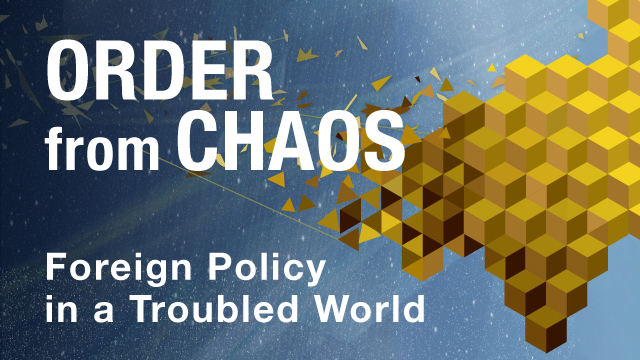

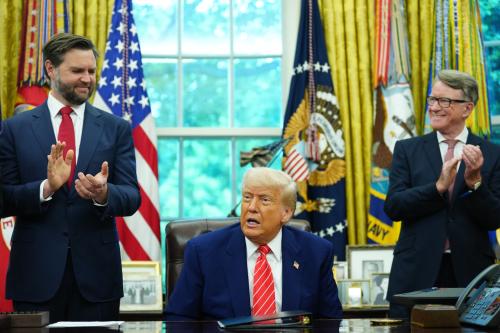
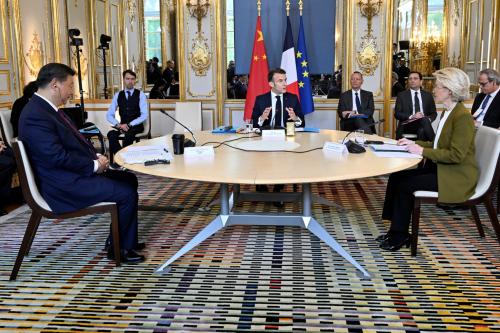
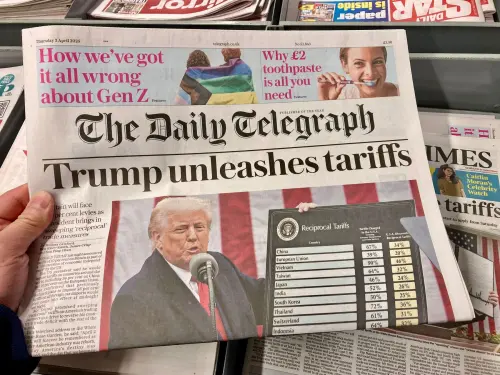

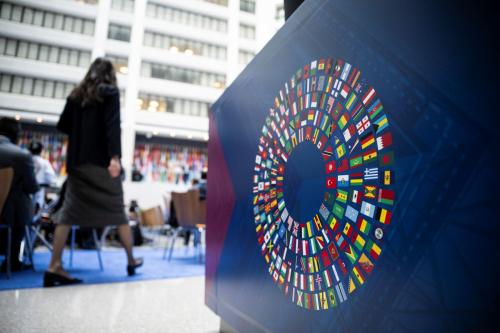
Commentary
How Europe can avoid a transatlantic trade war
July 22, 2025